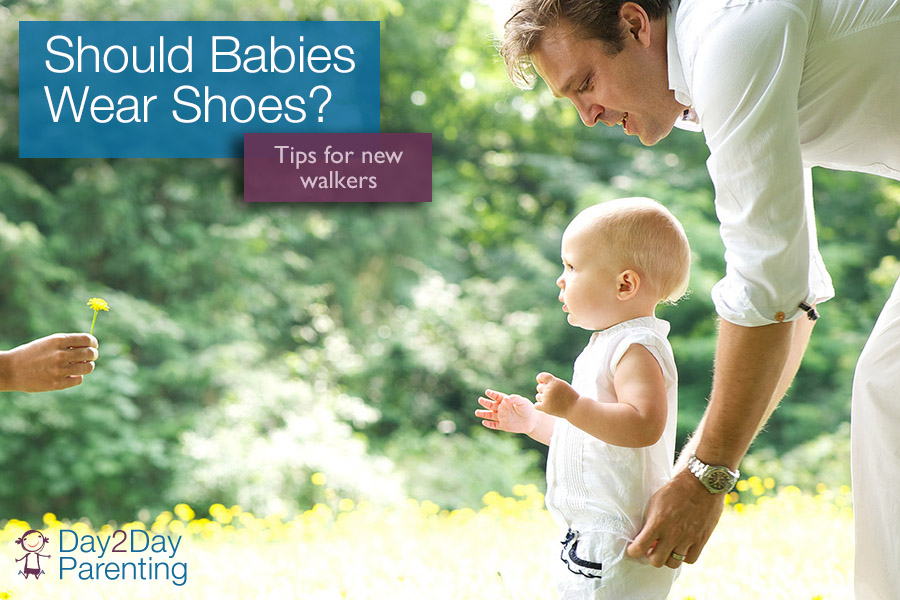Shoes or no shoes? This is a question many parents of young children who are learning to walk will eventually ask. Should babies wear shoes? Do shoes make children more stable? Or, will shoes hinder their ability to progress? Varying opinions of friends and family may add to the confusion.
Before children learn to walk, shoes are mainly decorative. Shoes at this stage are not really serving a functional purpose and are merely a fashion choice. There is no harm in putting shoes on a pre-walker, as long as the shoes are not too tight.
At birth, the foot does not contain bones. Instead, it is a bunch of cartilage that eventually develops into 28 bones. The bones of the feet do not fully harden until 5 years of age. This results in a foot that is very flexible. When a child is learning to walk, the toes are used to grip the floor to help maintain balance.
When Should Babies Wear Shoes?
Shoes are definitely not necessary in a child’s ability to learn to walk. However, shoes do have something to offer the child: protection. Shoes will protect a child’s foot from sharp objects. With this in mind, shoes should have closed toes, as many children tend to drag their toes when learning how to walk. As mentioned above, flexibility of the foot is natural and important. Shoes for learning/young walkers should be flexible. It should be easy to twist the shoe and also be easy to bend the front part of the sole. The flexible soles will help mimic the natural flexibility of the foot. Walking barefoot or in a flexible shoe will allow the muscles to develop and strengthen properly. Having good flexibility is important to the normal development of the arch of the foot.
Finding the Right Shoe
The upper part of the shoe should be of a soft, breathable material that won’t cut into the foot. The bottom of the sole should be rubber, so that it is not slippery.
It is unnatural to place a flexible foot in a rigid shoe. A foot that is constricted in a rigid shoe can prevent the bones from developing normally. Wearing stiff shoes can make walking more difficult, as these shoes tend to be heavier and make the child more likely to trip and fall.
It is also important to get the correct size shoe. Shoes should be fit at the end of the day, when the feet are likely to be at their most swollen. When the child is standing, there should be an index finger’s width of room between the front of the shoe and the child’s longest toe (not necessarily the first, or big, toe).
Indoors, a child learning to walk should spend the majority of the time barefoot or in socks with rubber dots on the bottom to prevent slipping. Outdoors, to protect the feet from injury, flexible shoes that allow the normal use of muscles and normal development of the foot should be worn.

